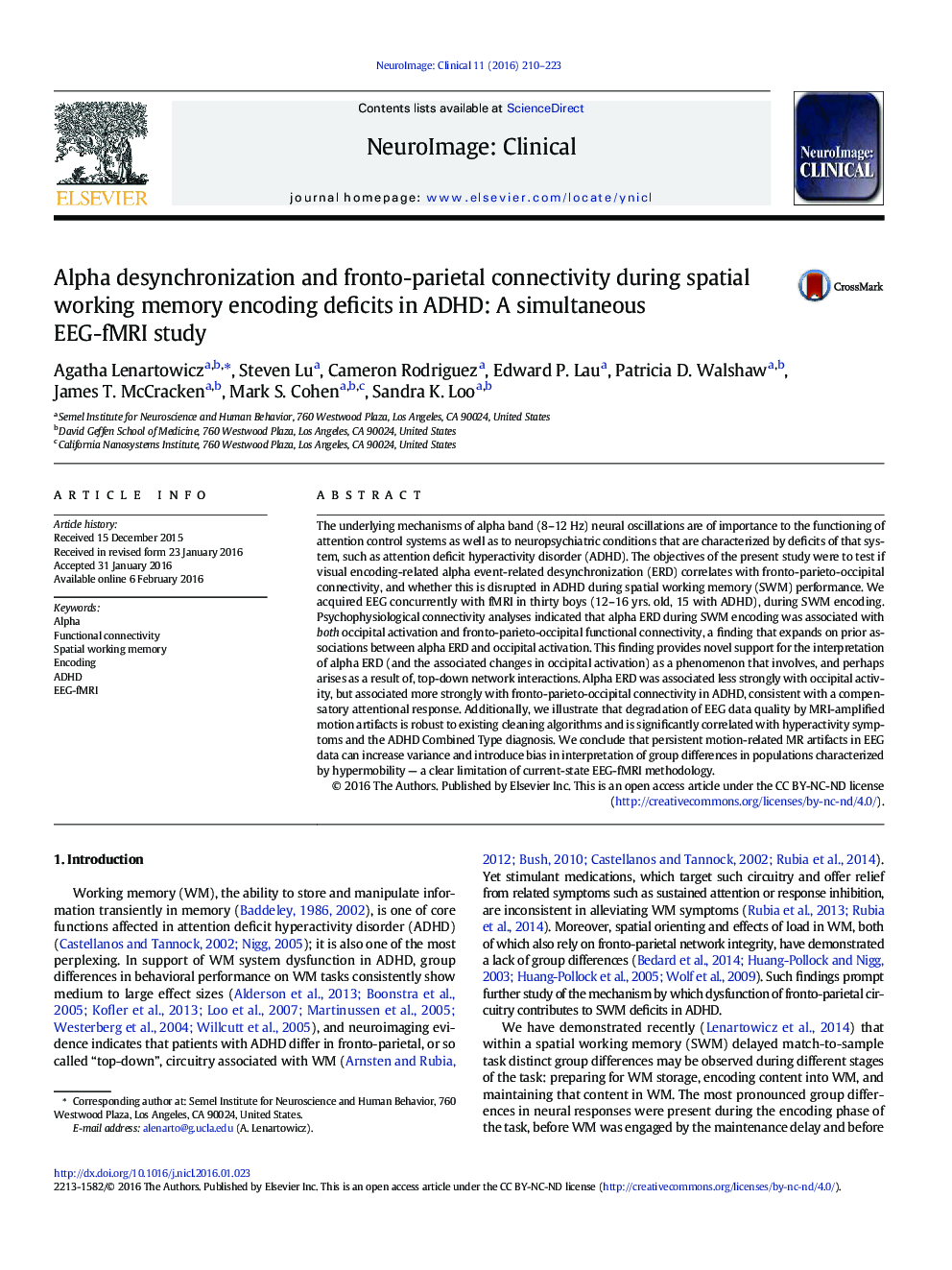| کد مقاله | کد نشریه | سال انتشار | مقاله انگلیسی | نسخه تمام متن |
|---|---|---|---|---|
| 3074913 | 1580956 | 2016 | 14 صفحه PDF | دانلود رایگان |

• We measure neural activity and connectivity of alpha ERD.
• We employ concurrent EEG-fMRI recordings.
• Alpha ERD predicts occipital activation and fronto-parieto-occipital connectivity.
• ADHD participants show weaker alpha ERD occipital effects.
• ADHD participants show stronger alpha ERD connectivity effects.
The underlying mechanisms of alpha band (8–12 Hz) neural oscillations are of importance to the functioning of attention control systems as well as to neuropsychiatric conditions that are characterized by deficits of that system, such as attention deficit hyperactivity disorder (ADHD). The objectives of the present study were to test if visual encoding-related alpha event-related desynchronization (ERD) correlates with fronto-parieto-occipital connectivity, and whether this is disrupted in ADHD during spatial working memory (SWM) performance. We acquired EEG concurrently with fMRI in thirty boys (12–16 yrs. old, 15 with ADHD), during SWM encoding. Psychophysiological connectivity analyses indicated that alpha ERD during SWM encoding was associated with both occipital activation and fronto-parieto-occipital functional connectivity, a finding that expands on prior associations between alpha ERD and occipital activation. This finding provides novel support for the interpretation of alpha ERD (and the associated changes in occipital activation) as a phenomenon that involves, and perhaps arises as a result of, top-down network interactions. Alpha ERD was associated less strongly with occipital activity, but associated more strongly with fronto-parieto-occipital connectivity in ADHD, consistent with a compensatory attentional response. Additionally, we illustrate that degradation of EEG data quality by MRI-amplified motion artifacts is robust to existing cleaning algorithms and is significantly correlated with hyperactivity symptoms and the ADHD Combined Type diagnosis. We conclude that persistent motion-related MR artifacts in EEG data can increase variance and introduce bias in interpretation of group differences in populations characterized by hypermobility — a clear limitation of current-state EEG-fMRI methodology.
Figure optionsDownload as PowerPoint slide
Journal: NeuroImage: Clinical - Volume 11, 2016, Pages 210–223